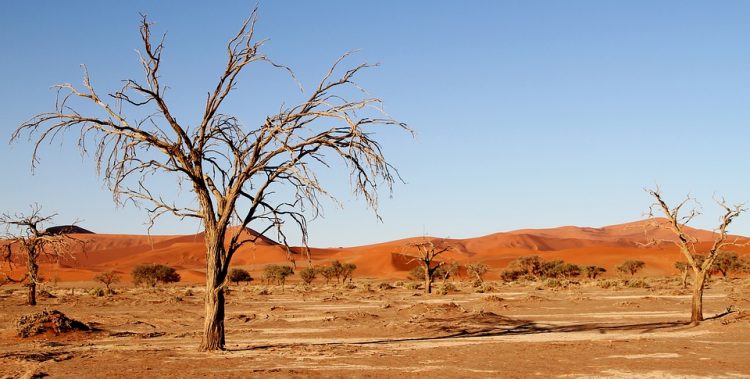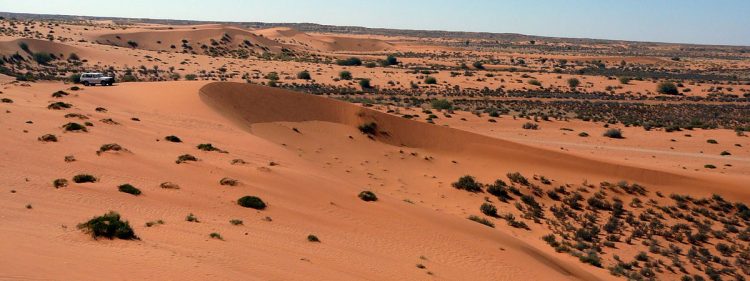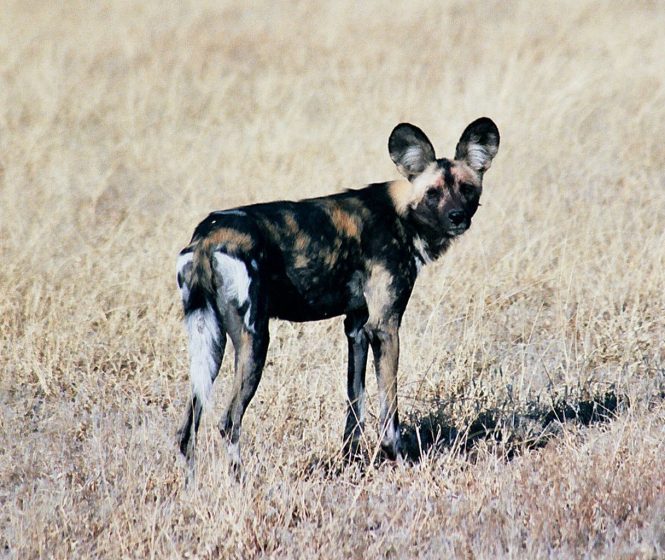Kalahari Desert Location
The Kalahari Desert spans more than 360,000 square miles across South Africa, Namibia, and Botswana. The annual rainfall is a bit high, between 5 and 10 inches. The Kalahari Desert is part of the Kalahari Basin (930,000 square kilometers), which includes the Okavango River Delta and other wetlands.
Kalahari Desert Facts
The Kalahari Desert is a very attractive name to inspire you. We probably don’t know why. The desert name instills a sense of dismay at the same time. This emanates an uncanny attraction. You may have different thoughts, in the strictest sense of the word. The Kalahari Desert gently undulating, sand-covered plain, and bedrock are exposed in the low kopjes (vertical-walled hills) that rarely but conspicuously rise above the general surface.
Apart from kopjes, three surfaces characterize virtually all the Kalahari: sand sheets, longitudinal dunes, and vleis. The major part of the Kalahari Basin encompasses all of Botswana and more than half of Namibia. The sand dunes, stretching west to the Namib Desert, are the largest continuous expanse of sand on earth.
The western side of the Kalahari Desert is composed of long chains of dunes measuring at least 1 mile in length, several hundred feet in width, and 20 to 200 feet in height. The southern part of the Kalahari Desert has a water surface in small and widely scattered waterholes. Almost all rainwater falls disappear immediately into the deep sand.
The desert soils are mainly based on reddish-colored sand and are low in organic material. Soils in the Kalahari Desert are largely based on sand, are reddish in color, and are low in organic material. Chemically, they are comparatively alkaline, and dry soils tend to be highly calcareous or saline, and normally they are toxic to most vegetation.
Around 5,000 Kalahari people speak the Taa language with the most vowels and consonants. However, in the Tswana language, Kalahari means ‘large thirst’. Ancient dry riverbeds—called ‘omuramba’—traverse the central northern reaches of the Kalahari and offer standing pools of water during the rainy season.
The Kalahari Desert is the 6th biggest desert by area in the world and the second biggest in Africa after the Sahara Desert. The geologist says the Kalahari Desert was once thriving, full of life, with numerous lakes that exist here. But these days, large salt pans remain, i.e., Makgadikgadi Pan, the remains of the once huge Lake Makgadikgadi. Another big pan is the Nxan pan. The most popular game, “Mario Kart,” features a track named Kalimari Desert.
This track was inspired by the Kalahari Desert. Because of its sparsely populated expanse, the Kalahari is served by infrequent roads and tracks. Furthermore, the Kalahari Desert is home to one of the biggest diamond mines in the world. The diamonds were unearthed almost thirty years ago in the Gaghoo Mine, which first opened in 2014. Hence, after three years of construction, the project was completed. This mine extracts diamond ore using a GO25 kimberlite pipe and has a production capacity of 720,000t a year.
The people of Kalahari
The Kalahari Desert is inhabited mainly by Bantu speakers and Khoisan-speaking San, with a small number of Europeans who entered in the 19th century as travelers, missionaries, ivory hunters, and traders. It is believed that nomadic hunters (San People) lived in the Kalahari Desert for over 20,000 years. They are the oldest continuous residents of southern Africa.
Many San people were killed during various wars when European settlers arrived here. Their lives were disturbed by the large-scale killing of wild animals that they had earlier hunted and the grazing of wild edible plants by cattle. Interestingly, more than a hundred thousand San people still live along the fringes of the Kalahari.
Some precious diamonds and deposits of nickel, copper, and coal have been unearthed here. Major livestock grazing is thought to be the largest threat to the Kalahari ecosystem. The ongoing changes to plant communities and increased erosion remain relatively limited.
The weather of the Kalahari Desert
The sand dunes are mainly covered with an abundance of vegetation, i.e., grass tussocks, shrubs, deciduous trees, infrequent precipitation, and wild swings in temperature. In the summer season, it is scorching hot to touch 45 degrees Celsius, and in the winter, the temperature drops to -15 degrees Celsius. Also, in winter, the climate is extremely dry; humidity is very low, and no rain falls for six to eight months.
Further, the moisture-bearing air is derived from the Indian Ocean, and precipitation is greatest in the northeast and declines toward the southwest. Rainfall, however, is extremely variable. Most of the rain comes as summer thunderstorms, with great variation from place to place and from year to year.
The wetter open woodlands are made with acacia, famous as camelthorn trees. These camelthorns are a crucial part of the desert ecosystem, manufacturing nutrients that boost other plants to grow around their bases and providing shade for animals. The Kalahari Desert had an intricate climatic history more than millions of years ago, in line with major global changes.
The last 250,000 years have been reconstructed from numerous data sources and offer evidence of both former extensive lakes and periods drier than now. As time goes on, the Kalahari Desert has expanded to include parts of western Zimbabwe, Zambia, and Angola.
Flora and Fauna
Around 500 species of vegetation thrive during the rainy season. The water quality is better than in a normal desert. The water helps to flourish the plant life in many parts. The Hoodia cactus and other edible plants used by both humans and animals include creeping tsamma melons, gemsbok cucumbers, and wild cucumbers.
Other trees that grow in the Kalahari Desert include the shepherd’s tree, blackthorn, and silver cluster leaf. In the drier area, vegetation and wildlife are much sparser, but the Hoodia cactus, used for thousands of years by the San people to ease hunger and thirst during long hunting trips, still maintains a foothold there.
Kalahari Desert Wildlife
The animals that are adapted to difficult weather are meerkats, gemsbok, social weavers, Kalahari lions, and different species of birds. The desert is home to many big cats, including lions, cheetahs, and leopards. Endemic wildlife species have a great ability to adapt to the severe conditions and to survive many days without water.
The Kalahari wildlife obtains water from plants. Several other reptiles also live here, including Cape cobras, puff adders, rock monitors, kudu in denser brush, steenbok, duiker, and gnu (wildebeest). Also, the northern side of Kalahari provides considerable support to the population of giraffes, elephants, zebras, buffalo, roan, sable, tsessebe, impala, wild hunting dogs, and foxes.
Also, there are the other large and medium-sized mammals, i.e., jackals, hyenas, warthogs, baboons, badgers, anteaters, ant bears, hares, and porcupines; numerous small rodents; several types of snakes and lizards; and a wealth of birdlife. Moreover, several other birds and mammals use the desert, but most are migratory, venturing into the Kalahari only when sufficient water is available.
Read More: Eye of Africa Atlantis – Geological Phenomenon in the Sahara Desert















Source: 1, 2, 3, 4
Read More: The Tree of Life Kalaloch, Washington
Product You May Be Interested in
- Crush Food Cravings with Odd Water Hack and Melt 62lbs
- Flavor Pairing Ritual Supercharges Women’s Metabolisms
- Unlock your Hip Flexors, Gives you More Strength, Better Health, and All-Day Energy.






